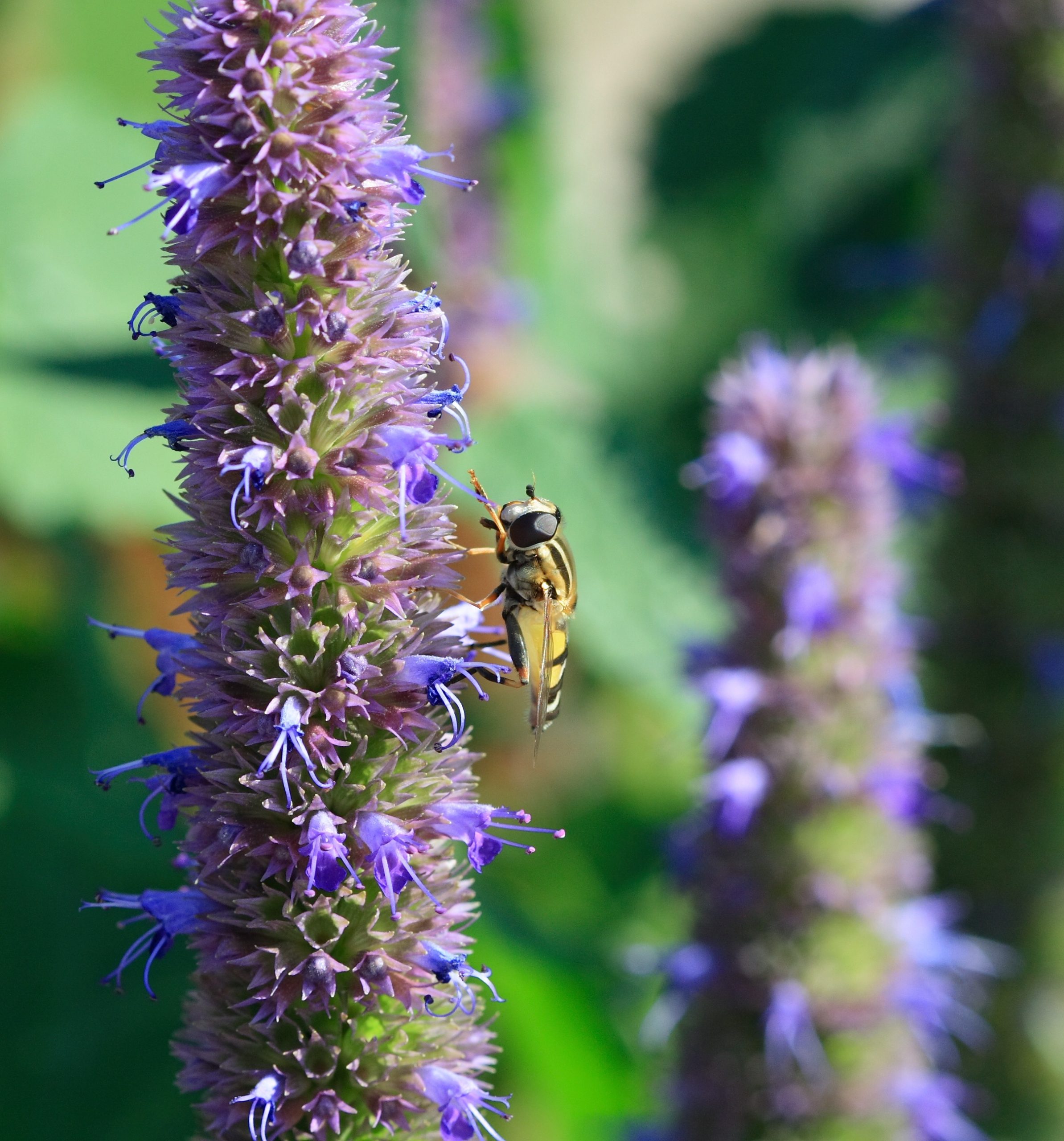Common Names and Other Names:
- Agastache
- Anise Hyssop
- Blue Giant Hyssop
- Lavender Giant Hyssop
- Fragrant Giant Hyssop
- Licorice Mint
Where Does It Occur:
Agastache foeniculum, commonly known as Anise Hyssop, is native to:
- North America, particularly in regions such as:
- Northern United States
- Southern Canada
- Prairie Provinces
It thrives in:
- Prairies
- Meadows
- Open Woodlands
- Roadsides
The plant prefers well-drained soils and full sun to partial shade. It is adaptable to various soil types, including sandy and loamy soils.
Basic Ingredients (Constituents):
Agastache contains several bioactive compounds contributing to its medicinal properties:
- Essential Oils:
- Methyleugenol
- Estragole (also known as methyl chavicol)
- Anethole
- Limonene
- Menthone
- Flavonoids:
- Acacetin
- Apigenin
- Quercetin
- Phenolic Compounds:
- Rosmarinic Acid
- Caffeic Acid
- Tannins
These constituents provide Agastache with antimicrobial, anti-inflammatory, antioxidant, and carminative properties.
Most Commonly Used For Treatment Of:
- Digestive Issues:
- Indigestion: Helps alleviate stomach discomfort and bloating.
- Flatulence: Reduces gas formation.
- Respiratory Conditions:
- Coughs and Colds: Soothes sore throats and reduces coughing.
- Bronchitis: Aids in clearing mucus from the respiratory tract.
- Fever Reduction:
- Acts as a diaphoretic, promoting sweating to help reduce fevers.
- Anxiety and Stress:
- Provides a calming effect due to its mild sedative properties.
- Antimicrobial Effects:
- Inhibits the growth of certain bacteria and fungi.
- Skin Conditions:
- Applied topically to relieve minor burns, wounds, and skin irritations.
Side Effects:
Agastache is generally considered safe when used appropriately, but potential side effects may include:
- Allergic Reactions:
- Skin Irritation: In sensitive individuals, especially those allergic to plants in the Lamiaceae family (e.g., mint, basil).
- Respiratory Symptoms: Rare cases of allergic rhinitis or asthma exacerbation.
- Gastrointestinal Upset:
- Nausea or stomach discomfort if consumed in large amounts.
- Interaction with Medications:
- May interact with medications metabolized by the liver enzymes CYP1A2 and CYP2E1 due to the presence of estragole and methyleugenol.
- Photosensitivity:
- Increased sensitivity to sunlight in rare cases.
Available Forms in the Market:
- Dried Herb:
- Used to prepare teas, infusions, or decoctions.
- Essential Oil:
- Extracted from the leaves and flowers for aromatherapy (use with caution due to concentrated compounds).
- Tinctures and Liquid Extracts:
- Alcohol-based extracts for internal use.
- Capsules/Tablets:
- Contain powdered Agastache for convenient dosing.
- Topical Preparations:
- Creams, ointments, or salves for skin applications.
- Culinary Uses:
- Fresh or dried leaves used as a flavoring agent in salads, desserts, and beverages.
Research and Results:
- Antimicrobial Activity:
- Study: “Antimicrobial properties of Agastache foeniculum essential oil.”
- Findings: Demonstrated inhibitory effects against various bacterial strains, including Staphylococcus aureus and Escherichia coli.
- Link: Journal of Applied Microbiology
- Antioxidant Properties:
- Study: “Antioxidant activity of extracts from Agastache foeniculum.”
- Findings: Showed significant antioxidant effects due to high phenolic content.
- Link: Food Chemistry
- Anti-inflammatory Effects:
- Study: “Anti-inflammatory effects of Agastache foeniculum in vitro.”
- Findings: Extracts reduced the production of pro-inflammatory cytokines.
- Link: Phytotherapy Research
- Anxiety Reduction:
- Study: “Anxiolytic-like effects of Agastache foeniculum in animal models.”
- Findings: Indicated potential calming effects, reducing anxiety-like behaviors.
- Link: Journal of Ethnopharmacology
Note: While these studies show promising results, most are preliminary or conducted in vitro or on animals. More clinical research on humans is needed to confirm efficacy.
Precautions:
- Pregnancy and Breastfeeding:
- Use with Caution: Insufficient reliable information is available; consult a healthcare provider before use.
- Children:
- Use with Caution: Not enough data on safety; consult a pediatrician before use.
- Allergies:
- Lamiaceae Family Sensitivity: Individuals allergic to mint, basil, lavender, or other plants in the mint family should exercise caution.
- Medication Interactions:
- Liver Metabolism: May affect drugs metabolized by liver enzymes CYP1A2 and CYP2E1; consult a healthcare provider.
- Photosensitivity:
- Sun Protection: Use sunscreen and protective clothing if experiencing increased sensitivity.
- Essential Oil Use:
- Dilution Required: Essential oils are highly concentrated and should be diluted before topical application to avoid skin irritation.
- Estragole and Methyleugenol Content:
- Potential Carcinogenicity: These compounds have shown carcinogenic effects in animal studies at high doses. However, the amounts present in culinary and typical medicinal use are generally considered safe. Moderation is key.
Conclusion:
Agastache (Agastache foeniculum), or Anise Hyssop, is a versatile herb valued for its medicinal and culinary uses. It offers potential health benefits, including antimicrobial, anti-inflammatory, antioxidant, and calming effects. While generally safe for most adults when used appropriately, it’s important to be aware of potential side effects and interactions with medications.
Recommendations:
- Consult a Healthcare Professional: Before incorporating Agastache into your health regimen, especially if you have underlying health conditions or are taking other medications.
- Moderation is Key: Use the herb in recommended amounts to minimize potential risks associated with certain constituents.
- Quality Assurance: Purchase products from reputable sources to ensure purity and correct species identification.
